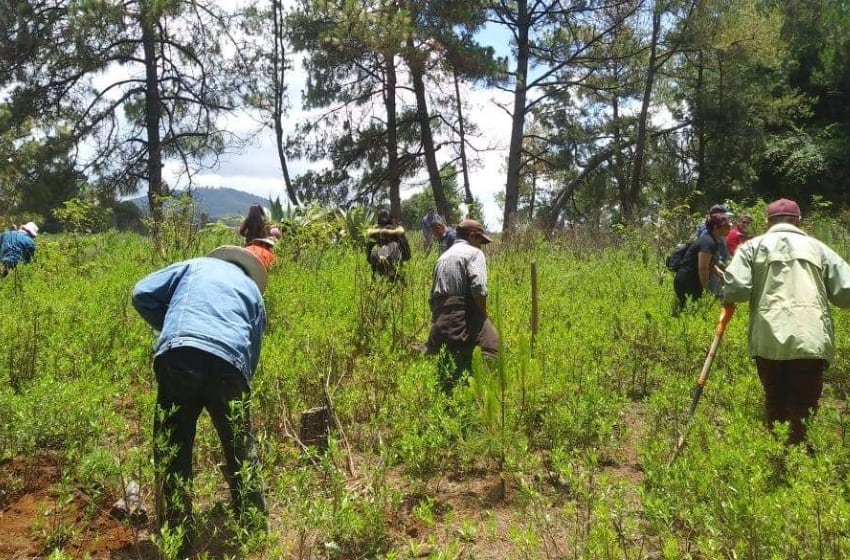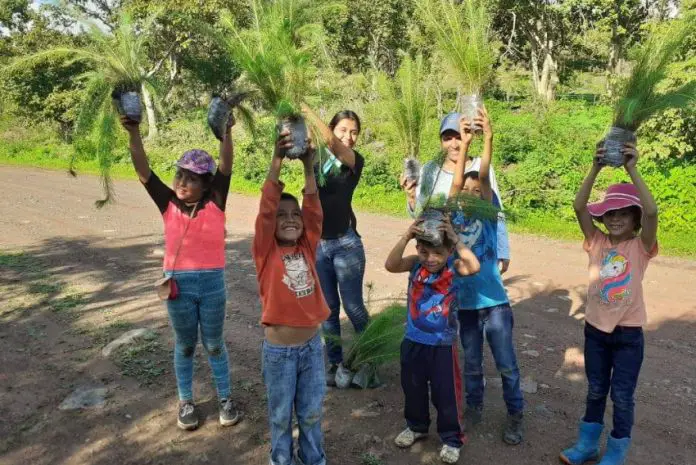Located in the central west of Mexico is the state of Michoacán, famous for its multiculturalism. Is also one of the most biodiverse states in Mexico. In its temperate zones, there are forests of oyamel, pine, oak, and pine-oak, while in the warm areas of the state, there are low and medium deciduous jungles.
In the last five years, more than 70 Purépecha communities have reforested their forests with over 2 million pine trees thanks to a pre-Hispanic model called ‘forest rounds,’ which has ensured a 90% survival rate for the planted trees.

This is great news, as Michoacán has experienced significant deforestation, especially in the last decade. Fifty thousand hectares of forest, according to numbers released by Rosendo Caro Gómez, head of the Michoacán Forest Commission (Cofom), have been lost.
The forests of Michoacán are particularly important as they form an important part of the habitat for the monarch butterfly, which travels thousands of kilometers each year from Canada to hibernate in Mexico.
Illegal logging, land use change (largely for more lucrative avocado cultivation), urban expansion, etc. are some of the enemies of the forests in Michoacán. In this sense, the reforestation initiative Nana Echeri (Mother Earth) by the Purépecha community is a breath of fresh air for the forests of Michoacán and the future of their preservation.
A conservation success story

This story begins with the organization of 30 communities which came together in 2009. They managed to obtain a proportional share of the financial resources that reach their municipalities for their own management and administration of public services such as drinking water, drainage, and lighting. But they have also implemented their own security system with the ‘community round,’ which dates back to pre-Columbian times. Additionally, they created a ‘Community Development Plan’ which was developed after consulting the needs of each family.
As part of their organizational system, the forest rounds involve up to 70 communities across 25 municipalities that make up the 4 main Purépecha regions in communities such as San Andrés Tziróndaro, Zirahuén, San Benito and Zacán.
These forest rounds, in addition to reforestation efforts, include the care of bodies of water and springs. In the words of Pável Ulianov, Purépecha spokesperson for the Supreme Indigenous Council of Michoacán: “Caring for and aiding the growth of the forest as part of our ancestral culture and worldview, independent of political parties, without economic compensation, and without political-electoral commitments,” is their objective.
Over the past 5 years, around 10,000 people have participated in forest care activities such as community rounds and forest rounds, as well as fire management, reforestation, etc.
“Since pre-Hispanic times, the Purépecha communities organized themselves in their neighborhoods, and different tasks were assigned: artisans, farmers, fishermen. The rounds are a model of care and security deeply rooted in the Indigenous communities of Michoacán, especially among the Purépecha people, and this figure is precisely what allows us to take care of the forests among more than 70 communities,” Ulianov explains.
The next challenge for a community that loves its forest
The communities of the 4 Purépecha regions want to expand the impact of forest care through a figure called ‘Guardians of the Forest.’
“We propose creating a more general forest round called ‘Guardians of the Forest’ that is intercommunal. That means it can go from one community to another. Currently, there are forest rounds, but they only take care of spaces from one to ten communities. We want to connect the 4 main Purépecha regions and even other indigenous peoples; their exclusive work will be to safeguard the forests, natural resources, and Mother Earth by region,” Ulianov explains.
Another challenge these communities face is getting the Mexican government to join the “Guardians of the Forest”, as ownership of the nation’s ecosystems is not clearly defined.
The conservation efforts of these communities are making a difference in forest care models, as they have achieved a survival rate of up to 90% for the pine trees, which is a very high index, corroborated by the Michoacán State Forest Commission.
Getting to know the ancient Purépecha organization and culture is very interesting and enriching, even beyond their environmental care tasks. If you want to learn more about their activities and even contact them to participate in their reforestation campaigns, you can visit their Facebook page or write to them at consejosupremoindigena@gmail.com.
Ana Paula de la Torre is a Mexican journalist and collaborator of various media such as Milenio, Animal Político, Vice, Newsweek en Español, Televisa and Mexico News Daily.
